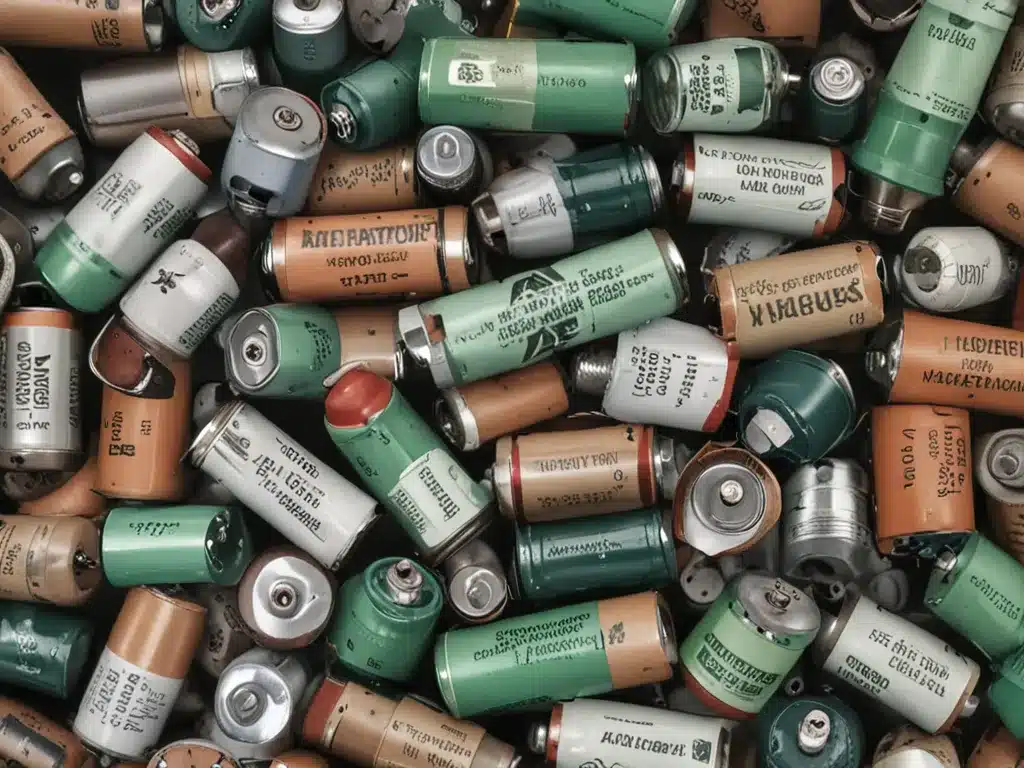Introduction
Batteries and light bulbs contain materials that can be hazardous to human health and the environment if not disposed of properly. As an environmentally responsible consumer, I want to ensure I handle these waste items correctly. In this article, I will provide in-depth information on proper disposal methods for batteries and light bulbs to minimize any potential hazards.
Why Batteries and Light Bulbs Are Hazardous
Batteries
Batteries contain heavy metals like mercury, lead, cadmium, and nickel. When batteries end up in landfills, these toxic metals can leach into soil and groundwater. Exposure to heavy metals can cause health problems in humans and harm wildlife.
Different types of batteries have different compositions:
- Alkaline batteries contain manganese dioxide, zinc, and potassium hydroxide.
- Lithium batteries contain lithium and lithium salts.
- Lead acid batteries like car batteries contain high levels of lead.
So all batteries pose a hazard and require special disposal.
Light Bulbs
Light bulbs, especially fluorescent bulbs, contain mercury and lead. Mercury is highly toxic and can cause neurological damage. When light bulbs break, mercury is released into the air or can leak into landfills.
- CFLs (compact fluorescent lamps) contain 3-5 mg mercury.
- Fluorescent tubes contain 10-50 mg mercury.
- HID (high intensity discharge) and neon bulbs also contain mercury.
So broken or discarded bulbs require hazardous waste disposal.
Proper Disposal of Batteries
To safely dispose of household batteries:
-
Do not put batteries in regular trash or recycling bins – take them to a hazardous waste collection center.
-
Tape battery terminals before disposal to prevent fires from short circuits.
-
Rechargeable batteries like NiCad, NiMH, and lead acid can be recycled – drop them off at stores that accept them.
-
Alkaline batteries can be safely disposed in normal landfills in some areas – check local guidelines.
-
Lithium, mercury, or silver oxide button cells are hazardous – take to disposal centers.
-
Car and equipment lead acid batteries can be exchanged when buying a replacement.
-
For large volumes of batteries (over 11 lbs), contact your local waste management authority for disposal options.
Proper Disposal of Light Bulbs
To safely dispose of light bulbs:
-
Do not put bulbs in the garbage. The glass can break and release mercury.
-
Recycle CFLs and fluorescents at certified recycling centers – do not send them to landfills.
-
Recycle at big box stores or other retailers that accept CFLs.
-
For broken CFLs, follow EPA guidelines for safe cleanup and disposal. Ventilate the room and seal bulbs in a glass jar.
-
Incandescent and LED bulbs can go in the regular trash in most areas – check local guidelines. LED bulbs contain no mercury.
-
For large volumes of bulbs, contact your city or county household hazardous waste program.
-
Businesses may require special disposal for large volumes of fluorescent bulbs.
Finding Drop-off Locations and Events
To properly dispose of batteries, CFLs, and other hazardous waste:
-
Check your city or county website for household hazardous waste drop-off locations and events.
-
Big retailers like Home Depot, Lowe’s, Best Buy, and IKEA often accept CFLs and rechargeable batteries for recycling.
-
Use the Call2Recycle program locator to find drop-off sites for rechargeable and lead acid batteries.
-
Check Earth911.com for recycling centers and drop-off events near you.
-
For large businesses, contact a waste management company that handles hazardous waste disposal.
Proper disposal helps keep hazardous waste out of landfills and our soil and water. By taking batteries and light bulbs to recycling centers, we can prevent health and environmental damage. With some research and care, handling these waste items responsibly is simple.







